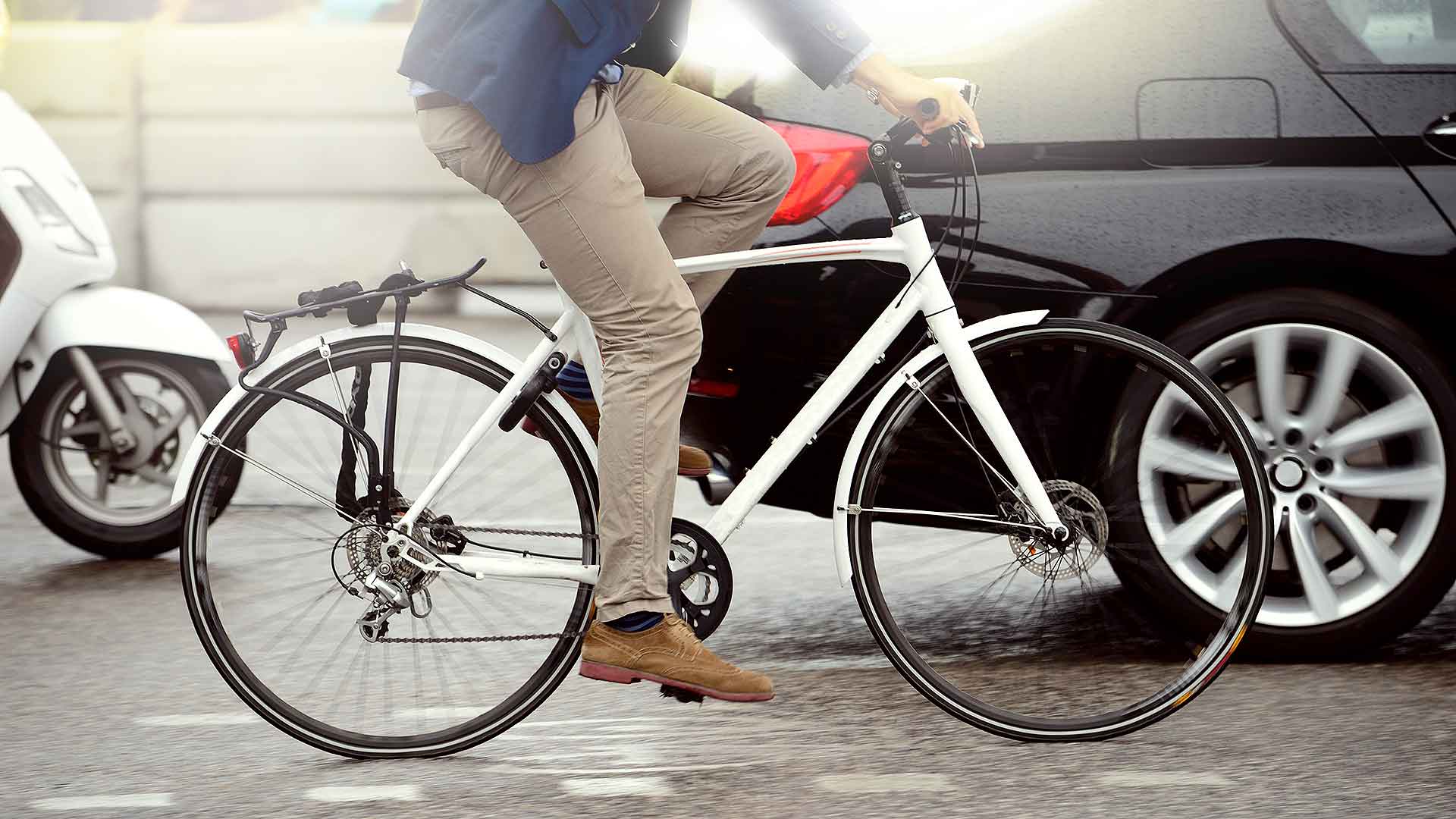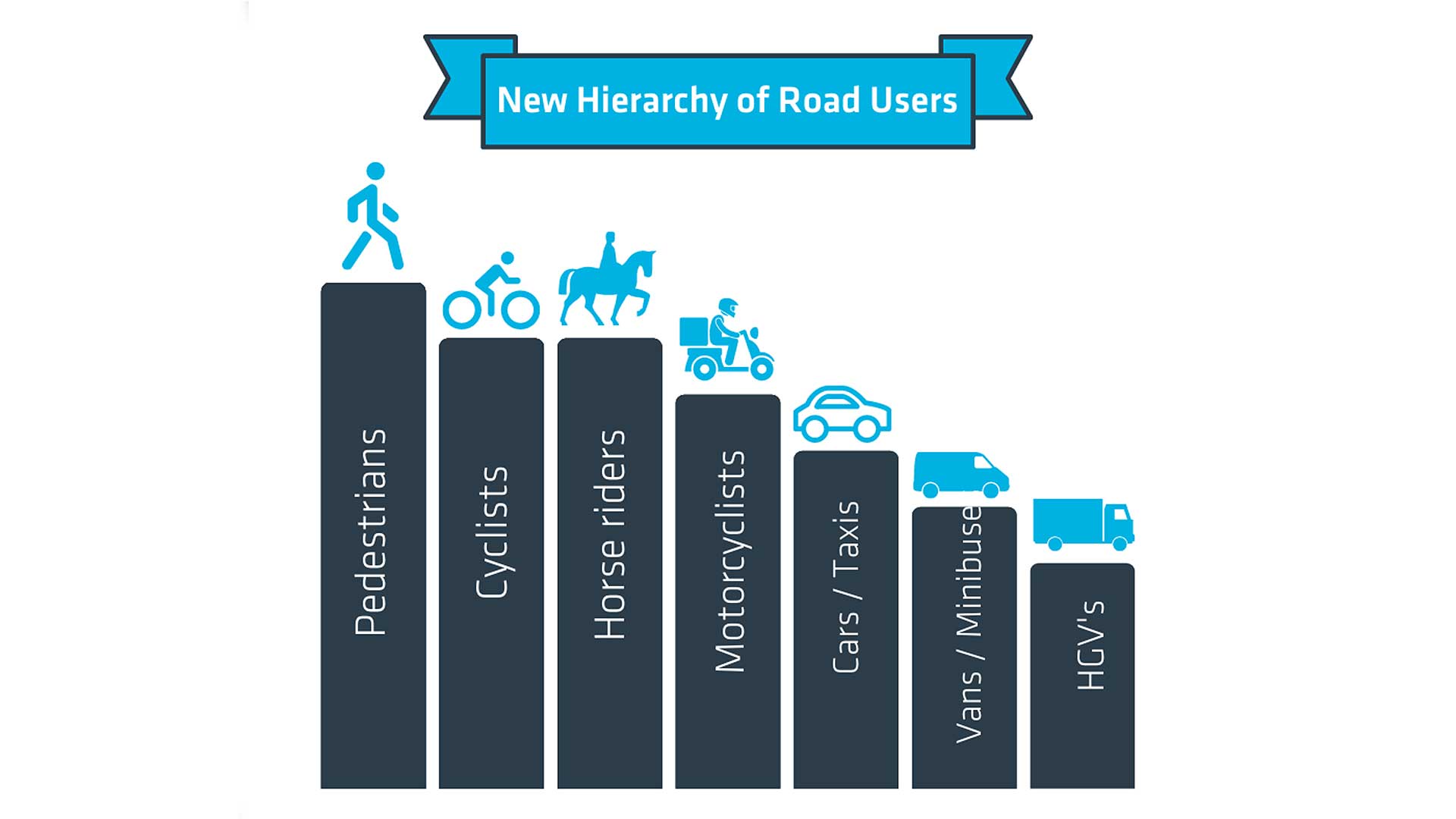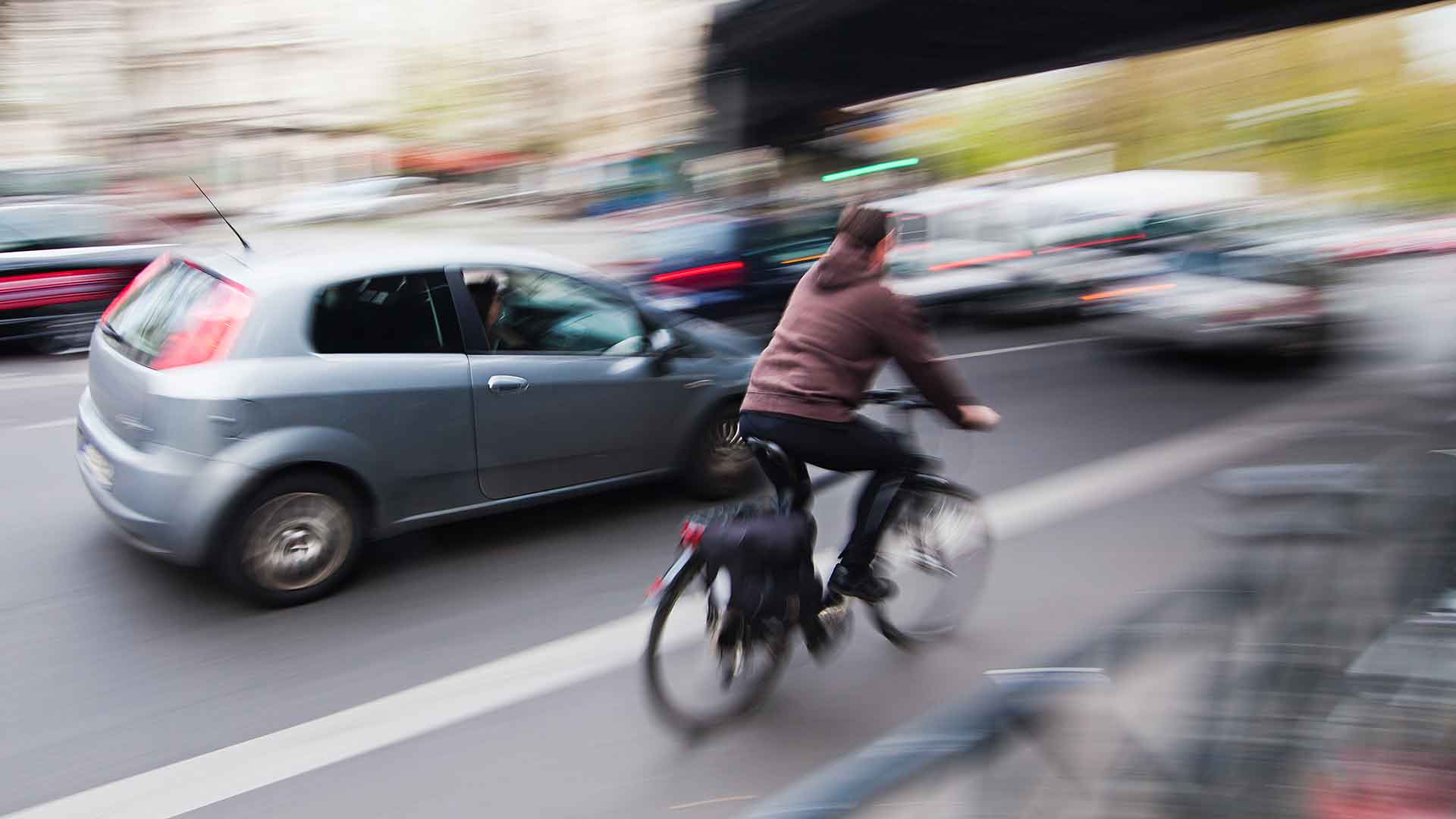
The Highway Code has introduced new regulations for 2022 called ‘The Hierarchy of Road Users’.
The objective is to encourage those who can do the greatest harm to others to reduce the danger or threat they pose.
It is intended to alter motorists’ behaviour behind the wheel, so they are more aware of the disparity in risk, and potential to suffer injury, between different road users in the event of a collision.
Here, we explain how the Hierarchy of Road Users will work.
The Hierarchy of Road Users concept

In the Hierarchy of Road Users, those at most risk in the event of an accident are at the top of the hierarchy.
The idea is for drivers of larger vehicles to look after more vulnerable road users.
The Hierarchy of Road Users comprises:
- Pedestrians, in particular children, older adults and disabled people
- Cyclists
- Horse riders
- Motorcyclists
Despite what some critics have suggested, the Hierarchy of Road Users does not give priority to pedestrians, cyclists and horse riders in every situation.
Rather, it aims to encourage more mutual respect and consideration of others, to keep all road users safe.
To clarify this concept, there are a number of rules to support the Hierarchy of Road Users. These are called the ‘H’ rules.
H rules and the Hierarchy of Road Users

The ‘H’ rules ‘tackle one of the safety issues pedestrians encounter or perceive when walking’, says the government.
Rule H1
It is important that ALL road users are aware of The Highway Code, are considerate to other road users and understand their responsibility for the safety of others.
Rule H1 explained: those in charge of vehicles that can cause the greatest harm bear the greatest responsibility to take care and reduce the danger to others.
But cyclists and horse riders likewise have a responsibility to reduce danger to pedestrians.
Rule H2
Rule for drivers, motorcyclists, horse riders and cyclists
Rule H2 explained: drivers and motorcyclists should give way to pedestrians waiting go cross at a junction. They MUST give way to pedestrians on a zebra crossing, and should give way to those waiting to cross.
Horse riders should also give way to pedestrians on a zebra crossing.
Cyclists should give way to pedestrians on shared-use cycle tracks – and only pedestrians may use the pavement.
Rule H3
Rule for drivers and motorcyclists
Rule H2 explained: motorists should not cut across cyclists going ahead when turning into or out of a junction, just as they wouldn’t turn across the path of another vehicle.
Drivers should also not turn at a junction if doing so would cause a cyclist to swerve or stop.
They should stop and wait for a safe gap in the flow of cyclists, which includes when cyclists are moving off from a junction, passing stationary or slow-moving traffic, and travelling around a roundabout.
What are the other changes to The Highway Code in 2022?
Overall, there are four new rules and 49 changes to The Highway Code in 2022.
Updates include:
- Giving priority to people walking across and people cycling straight ahead when turning in and out of junctions
- Leaving at least 1.5 metres when overtaking cyclists at speeds of up to 30mph – and even more space when passing at higher speeds
- Pass horse riders at speeds under 10mph, leaving at least 2 metres of space
- Keep to a low speed and leave at least 2 metres of space when passing a person walking in the road
- Encouraging the ‘Dutch Reach’ when exiting a car – opening the door with the hand furthest from the door, to help over-shoulder glances
- Cyclists are allowed to ride in the centre of the road, or two abreast, for their own safety – but should allow others to overtake where safe to do so
The government is also reminding motorists that many of the rules in The Highway Code are legal requirements.
If motorists disobey the rules, they’re committing a criminal offence – and if they do not follow the other rules in the code, it could be used as evidence in court to establish liability.
ALSO READ:
The Highway Code rules you may have forgotten
IT IS MY STRONG BELIEF THAT, NOW CYCLISTS ARE BEING PROTECTED BY THE CHANGES TO THE HIGHWAY CODE RULES, WHICH IS NO BAD THING.. HOWEVER, THEY SHOULD NE MADE YO A) WEAR A HIGH VIZ SHOULDER BAND OR JACKET, WITHPUT EXCPTION, ALSO DIASPLAY A FRONT AND REAR LIGHT ON THE BICYCLE, WHICH SHOULD NOT BE OF THE FLASHING TYPE. fOLLOWING A FLASHING LIGHT FOR ANY DISTANC BECOMES DISCONCERTING FOR DRIVERS.
As a pedestrian, cyclist and driver, I applaud you @Motoringresearch.com and Richard Aucock, for this commendable article on the new hierarchy of road users. In my opinion it provides a really good resume, presented in the inclusive manner which the hierarchy is intended to bring to personal transport in the UK. It avoids the partisan, conflicted arguments so often presented in other articles on this topic, even from the general media. I personally hope that this rounded, socially inclusive view of the hierarchy of road users is the one which comes to prevail in the future, where all of us who use personal transport (whether that be on foot, by bicycle, car – or even horse) can do so in safety with proper respect for everyone else, regardless of how they choose to travel.
Motorists are expected to give cyclists 1.5 metres clearance when overtaking. Fair enough, however, are cyclists expected to give motorists 1.5 metres clearance when overtaking slow moving and queuing traffic?
No, and try and comprehend why. Take a minute. It’s not tricky but you might need it.
:D Good answer